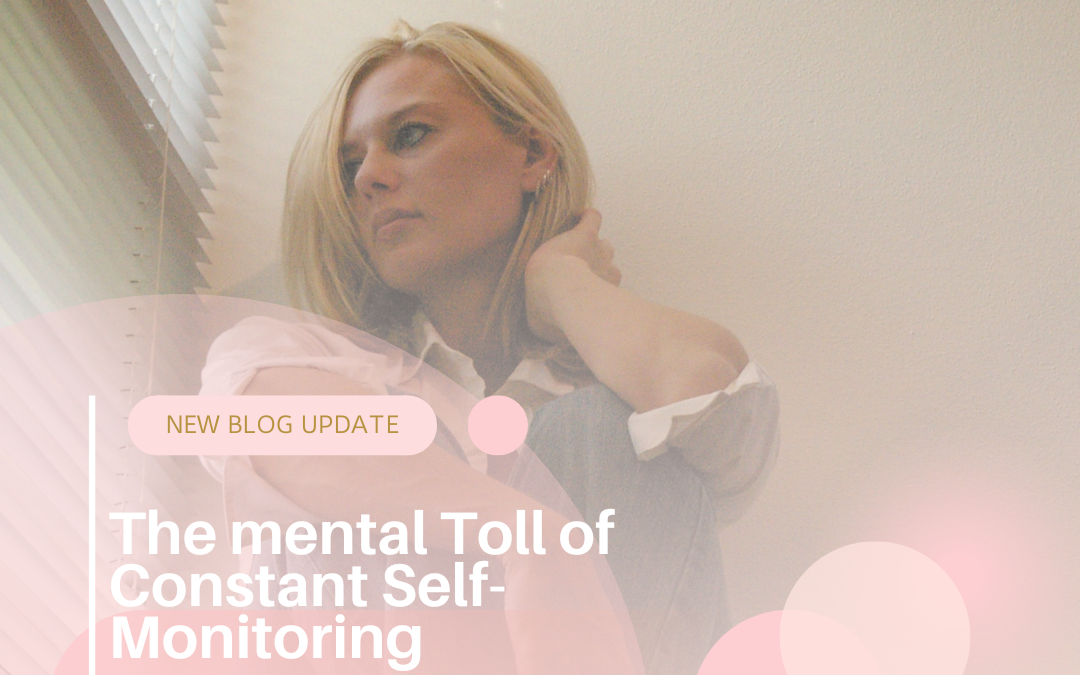Have you ever left a conversation and replayed it in your mind, analyzing your tone, your expressions, your word choices—wondering if you came off “wrong”? Maybe you scanned your body language during a work meeting or practiced how to say something three different ways before finally speaking up.
This isn’t just overthinking. It’s constant self-monitoring, and it creates a type of internal noise that can be mentally exhausting, emotionally disconnecting, and even identity-eroding.
What Is Self-Monitoring?
Self-monitoring is the ability to observe and regulate your behavior, speech, or presentation in response to social cues. It can be adaptive—it helps us navigate different settings and build relationships.
But when it becomes chronic, rigid, or anxiety-driven, it stops being a tool and starts being a trap.
The Mental Load of Being Hyper-Aware
People who constantly self-monitor live with an internal commentator narrating their every move:
-
“Was that too much?”
-
“Should I have smiled more?”
-
“I don’t think they liked how I said that.”
-
“Fix your posture. Don’t fidget. Speak clearly.”
This loop isn’t just distracting—it’s draining. It pulls attention away from authentic connection and toward performance management. Even moments that should feel safe—like hanging out with friends or relaxing in a meeting—can feel like a test.
Over time, this can lead to:
-
Decision fatigue from overanalyzing small behaviors
-
Anxiety rooted in social performance
-
Emotional suppression to avoid “wrong” reactions
-
Loss of authenticity from over-curation of identity
-
Burnout from trying to control perception 24/7
Who Experiences This Most?
While anyone can fall into the self-monitoring trap, certain groups are more vulnerable:
-
Neurodivergent individuals who’ve learned to “mask” in neurotypical environments
-
Trauma survivors who were conditioned to scan for danger or read others’ emotional states
-
People of color, LGBTQ+ folks, or marginalized individuals who code-switch to stay safe or accepted
-
Children of emotionally unpredictable caregivers, where hypervigilance was necessary for survival
For these individuals, self-monitoring isn’t just about social polish—it’s about protection. And unlearning it requires more than just “being yourself.”
Quieting the Internal Noise
Reducing the mental toll of constant self-monitoring isn’t about flipping a switch—it’s about building a new kind of safety, one where authenticity is allowed and internal trust is restored.
Here’s where to start:
-
Name it: Recognize the voice that’s evaluating you in real-time. That awareness alone creates space for choice.
-
Create low-monitoring zones: Spend time with people or in places where you don’t have to perform. Even small moments of relief help.
-
Work with a therapist: Especially if masking or self-monitoring started as a survival response, therapy can help untangle it without shame.
-
Practice self-compassion: You’re not “too much” or “too sensitive” for struggling with this. It likely started as a way to protect yourself.
-
Rebuild internal trust: The goal isn’t to monitor less so you mess up more—the goal is to trust that even when you’re imperfect, you’re still worthy of connection.
Final Thoughts
There’s nothing wrong with being aware of how you come across. But when your inner narrator won’t turn off, and you feel more like a performance than a person, it’s time to examine the cost.
You deserve relationships and spaces where you can exist without editing yourself in real time.
You deserve silence from the internal noise.
You deserve to just be.


Recent Comments